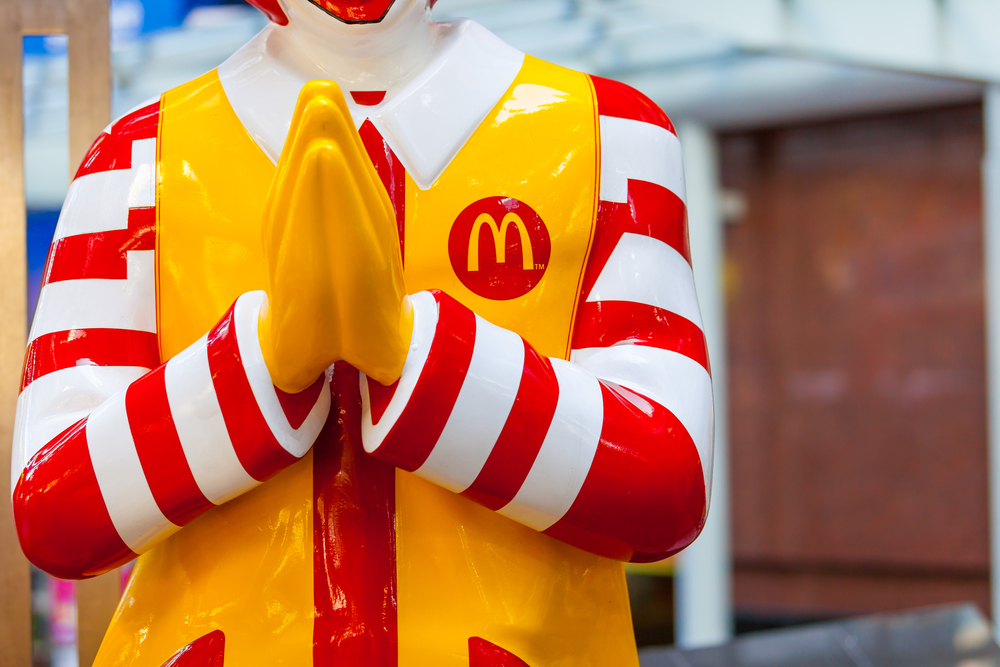The McStruggle for cultural balance
It’s one of the world’s largest franchises.
It’s a religious destination of all poor college students with 2 am munchies, and of small children buying into the notion that cheap plastic toys are a step toward personal fulfillment.
It’s home to food so artificial that it has the longevity of a cockroach’s lifespan, yet we fill our bodies with mass quantities of the stuff.
McDonald’s is truly the king of fast food chains—the OG.
While an inherently American joint, specializing in cheeseburgers, fries, milkshakes and other calorie-rich content that can be mass-produced and consumed with low expectations, McDonald’s has stores open across 119 countries. However, serving approximately 68 million customers (these figures have been drawn up from Wikipedia, so naturally they can in no way be inaccurate) requires a bit of creative adaptation to what we know as “fast food.”
Cultural differences across the board also significantly impact food preferences—not just in a “we-don’t-want-to eat-this” kind of way, but also in the more serious “this-food-is-a-direct-slight-on-our-culture” and a “we-would-rather-go-to-the-fiery-pits-of-hell-than-be-any-where-in-the-vicinity-of-this-devil-food” kind of way. For example, serving cheeseburgers in the face of India’s current ban on beef would not be a good move.
McDonald’s has therefore introduced regional menus in most countries that are programmed to satisfy the cultural standards and preferences unique to that region. From Japan’s Gracoro burger (consisting of cheese, shrimp and macaroni) to Spain’s McGazpacho, we see this vast array of food items converted to the “Mc-”genre and every year, more items get added to this stylized list.
However, this practice calls the necessity and impact of adapting and rebranding traditional foods into question. By integrating varied cuisines under one banner, McDonald’s is not only acknowledging and accommodating the diversity in preference and palates across cultures, but it is also equalizing the fast food experience to some extent. It allows for a form of inclusivity that would not exist had they rigidly clung to the standard American McDonald’s menu –in fact, it would have been impossible for them to be successful in many regions of the world and their business model would be nowhere near as successful.
For example, I will once again call upon McDonald’s India menu: in a country where a majority of its population is predominantly vegetarian, the fast food menu incorporates a large variety of vegetarian options (that are actually so unbelievably good), all which are non-existent in America. In fact, the branches in America offer few vegetarian options at all, leaving a pretty substantial gap in the market (and leaving poor vegetarians to stick to fries and packets of ketchup).
Furthermore, integrating cultural differences into the standard fast food fare allows for a lot of creativity within the field. For example- Korea’s Double Decker Shrimp Burger, and Malaysia’s Samurai Burger both seem to be a work of art that the rest of the world is painfully missing out on.
Gone are the days of the same beef burgers and fries. You can now get a Steak and Cheese Pie within ten minutes in New Zealand. I, for one, was devastated when I realized the Canadian McDonald’s menu simply did not offer the McSpicy, which is available in Singapore (think a McChicken, except with actual crunch, flavor, and spice).
This kind of inclusivity and celebration of diversity is something that humanity seems to struggle with on a daily basis (arguably now more than ever) –so it is kind of beautiful to see it in in these little things. McDonald’s: bringing the world together through late night binges and possible obesity.
On the other end of the spectrum, McDonald’s just goes too far sometimes. For example, McDonald’s Malaysia’s Bubur Ayam McD features chicken on top of porridge topped with onions, ginger, shallots, and chilies. This is a dish traditional to a Malaysian household, and one could argue that including it into a fast food menu is a form of bastardization of a very integral part of their culture.
Food is woven very inextricably into the fabric of most cultures –and this form of gross commercialization can have negative connotations. The most telling example is a direct reaction to McDonald’s India announcing the release of a McDosa: an adaptation of a traditional South Indian meal that is personally insulting (If you can’t tell by now, I am really Indian).
Furthermore, some of the food that McDonald’s has attempted to integrate just doesn’t flow as well from one culinary medium to another – it either doesn’t fit the shift from family kitchen to a drunk munchies run, or is just plain weird (the McSpaghetti comes to mind).
McDonald’s has the ability to experiment, fail and succeed by virtue of their immense profitability. It doesn’t really matter if they introduce a dish that’s gross or offensive, they inevitably go on to find success through another culinary concoction. And while they do have quite a few downfalls, the fast food chain persists because of their ability to adapt and try to find unique ways of entering each market.
Image curtesy of blurGroup.
